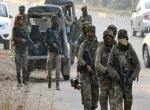“ … for then only you will be strong, when you cherish the laws, and when the revolutionary attempts of lawless men shall have ceased …” – Aeschines. Greek statesman
The Object of Discussion
Much confabulations have taken place over the past decade or so regarding the causes, remedies, incidents and casualties of the Maoist rebellion. Similarly, implementation of various action plans to deal with the rebellion have also been scrutinised at regular intervals. In this paper therefore, it is intended to present an overview of the situation as it obtains at the current juncture and as observed form close to the red affected territories.
But to begin with, it would be in order to first refresh the Maoist narrative. That is mainly because with counter-Maoist measures starting to show better results, there is detected a hint of the policy makers moving towards a cognitive comfort zone. As a summation of the rebellious dispensation would show, time is not ripe for that kind of ease to set-in.
The discussion would start with the Maoists’ rebellious past, delving next into the emerging situation as related to the state initiatives, the status of the rebellion and the peoples’ attitude, in that order. Finally a summary of observations from close to the ground would be listed out.
The Rebellious Narrative
We all understand that the Maoists are an anti-national outfit. Ideologues of the rebel outfit reject our Constitution, vilify our choice of democracy and jurisprudence, and profess their outfit’s commitment to overthrowing the ‘putrid governing system, by armed revolution’, to install ‘just rule of the proletariat’ (sic), as they believe. In that quest, they are joined by young, ambitious and fiery rousers of the local people - the severely exploited tribals (Adivasi) and old settlers (Moolvasi). These fiery ones are the local area commanders, the mainstay of the rebellion, who stoke the locals’ real and prompted grievances to form armed ‘revolutionary squads’ out of them to assail the various institutions of the state. In short, the Maoist Rebellion is but a marriage of cadres coming from people poor, ill-treated and exploited by the nexus of political-business-feudal predators, and an educated, out-of-work leadership looking for followers to turn them into committed ‘red’ revolutionaries.
Maoists’ weapons, ammunition, radio sets and explosives come from local manufacture, loot of private arms licensees, ambush and raid on police – whom they identified as their ‘Quartermaster’ – and some purchased from other anti-national and anti-social groups. Rations come from an ever-leaking public distribution system, while other necessities are purchased out of ‘tax collections’. ‘Collections’ in turn come through ‘contributions for the cause’ - extortion, ransom, bank loot and regular ‘taxation’ on trade, works, even development schemes, actually - at gun point. Following the dictum of ‘enemy’s enemy … my enemy’, the Maoists had, for some time, even gone to the extent of allying with separatists and criminals to get the wherewithal needed to sustain the rebellion. Funds so collected is used to run the outfit, but more than that, it is the main source of attracting recruits and retaining their loyalty, the stark fact being that the cadres are motivated by access to bare necessities of living; they find the rhetoric of ‘Lal Salam’ rather perplexing.
It is also known that to discredit the dysfunctional administrative system, Maoist rebels attack what nominal, sparse and unattended state-apparatus that happen to exist in areas under their sway. Besides demonstrative destruction of already dilapidated schools, health centres, administrative offices and such symbols of the state, they go about subverting the state’s authority through enforcement of some populist and some arbitrary diktats upon the people, government and private employees, traders, contractors and even top industrialists. In so doing, the Maoists try, with much success, to assume control of their ‘liberated’ areas where the writ of the state runs only to the extent that the Maoists approve of. For example, grants for schools and health centres, gram panchayats, employment schemes and public works are selectively permitted to go on so as to garner funds and influence over the masses.
System vs the People
Ironically, the Maoists’ most effective ally has been the callously anti-people state-apparatus itself. Governance in each of the nine affected states – Chattisgarh, Jharkhand, Odisha, Bihar, Madhya Pradesh, Uttar Pradesh, Andhra Pradesh, West Bengal and Andhra Pradesh - had typically been the instruments of corruption, callousness, discrimination, abuse and indecency, as perpetrated through massive ranks of rent seeking and exchequer plundering ‘servants’ of the state, so to say. In fact, arrogations of the state-apparatus made Maoist terror look as lesser of the evils, thereby distracting the people’s attention from the fundamental danger to Indian nationhood that the rebellion posed.
A revolt that sprouts from the people’s socio-economic disconcert takes a long time to be assimilated into normal, peaceful dispensation of mainstream life. That time goes in, first, to bring about attitudinal changes among the governing establishment, and second, to give visible shape to an egalitarian system that responds, to the extent practical, to the people’s concerns. Thus as the Maoists’ menace grew to worrying proportions, political and administrative systems in the affected states were pushed into a process of learning to respect the bona fide rights and concerns of their marginalised population.
That turn began sometime around the latter half of the 2000’s, and over the following half decade or so, it brought about a gradual improvement in the culture of the governing establishment. Sometime after 2011-12, the attitudinal change among the powers that be started showing results. Presently, the situation of people-government estrangement has been ameliorated to a considerable extent - albeit tentatively yet because old habits die hard just as old memories take time to fade.
As the following discussion would indicate, though the Maoist rebellion is yet to be overcome, it is on the backfoot while the state is regaining its credibility.
An Emerging Narrative
Recent observations from close to the ground indicate that the rebellious narrative is on the mend. Indeed, there is a long way to go yet, particularly as progress brings in its wake a corresponding rise in people’s aspirations. Even then, it is important to appreciate that there are hints of weakening of the rebellion, and that offers an opportunity to devise the next lines of action with some confidence. Indeed, should the present momentum of the Integrated Action Plan (IAP), and its related policy of ‘Samadhan’, is maintained, and if myopic inter and intra-state politicking over the remedial measures is contained, dissolution of the core of the Maoist rebellion might be in sight. So indicate the recent observations as recorded from grass-roots level.
Effects of States’ Initiatives
Even if in its tedious stages, the states’ initiatives to ameliorate the long-standing alienation of the local Adivasi, Moolvasi and rural people have started to become visible. Thus the issues of land alienation, compensation, forest rights and service-friendliness of the administrative machinery are better addressed. Small but steady steps on development of roads, rural electrification, improvement of public distribution system, restoration of health centres and primary schools, youth skill development programmes, etc., all executed through local participation, have started to restore the state’s image.
Each state has adopted measures to counter their Maoist narratives as these vary depending upon the local situations. These measures are more or less according to the counter-insurgency strategy devised at the Union level, with due customisation according to state-specific schemes. The schemes therefore vary from state to state in terms of content, quality and execution. In this regards, Chattisgarh, Maharashtra, and Andhra Pradesh are making good progress, while Bihar, Odisha and Madhya Pradesh are doing their bit. On their part, Jharkhand remains in stoic mode, West Bengal has enticed the rebel cadres by the attractions of party politics, and Uttar Pradesh finds that its Sonebhadra based rebels are either lying low or have turned to crimes associated with mining, ransom and such trades. It is encouraging to see that there is regular political leader-constituency dialogue, and the local administration – callous, corrupt and dismissive earlier – are less crass in their interactions with the common man. Meanwhile, having being fed up of harsh jungle life and running from police, many Maoist conveners have turned into brokers and middlemen in various schemes.
Of course, there remain many concerns to address. For one, the civil administrative machinery, particularly at the village, block, panchayat and township levels continue to suffer from structural woes, while the socio-economic schemes, by the time these reach the stage of delivery, are but shadows of what is promised. Besides, due to lack of manpower and on pretext of safety etc., coverage of state administration over distant and sparsely habited areas has still not taken place, these areas being left more or less for the police forces to intermittently tread. Spread of primary health centres has improved a bit as have the doctors’ and paramedics’ attendance, but medical stores are mostly empty. Teachers of local schools are more regular in their attendance, though teaching is a casualty due to lack of teachers and teaching aids. The public distribution system is working better where there is supervision, elsewhere the leakages continue.
Notably, the adopted concept of ‘clear, hold, develop’ is functional only in one part. Most of the lesser rebel-infested areas have indeed been cleared, but these are held rather thinly and developed even lesser due to departmental inadequacies and administrative limitations. More seriously, the core areas of the rebellion remain ‘liberated’ more or less. To that extent, there is a stand-off among the state, the police and the Maoists, each finding expediency in remaining within their ‘fortresses’ so to say. Any stagnation of that nature will be detrimental to the states’ cause because the rebellion can be defeated only when the Maoists are denied of the very space they control. Achievement of that situation is yet far away.
More Effective Policing
Policing, a department consigned to utter debilitation in the past, has shown remarkable improvements. Police forces are better manned and equipped through recruitments against vacancies and new raisings, as well as execution of schemes like ‘Modernisation of Police Forces’, ‘Fortified Police Stations’, ‘Security Related Expenditure’, ‘Special Infrastructure Scheme’ and ‘Road Requirement Plans’. In the last two named though, progress comes haltingly due to the contentious environment created by Maoists’ levy, state executives’ graft and contractors’ profiteering. Police stations and camps are better protected, patrols are organised more deliberately, communication is somewhat adequate and medical support has improved. There is an better crack-down on manufacture and trade of illegal arms and ammunition, and explosive are better accounted for. Maoist related incidents and casualties have come down by nearly half as compared to previous three years.
There is much to be improved upon yet, particularly in matters of provision of administrative cover in distant areas and its direct implications on build-up of more operational bases and police camps to cover the hitherto void areas. Due to this void, there remain many areas where the state’s footprint remains but tenuous and confined to occasional and carefully organised police patrols. In these areas, the People’s Liberation Guerrilla Army (PLGA) cadres remain safely ensconced while the Maoists continue to flaunt their dubious notions of ‘people’s government’. Strengthening of Counter-Naxal and policing grid, with provision of adequate logistic wherewithal remains a challenge to be overcome. Construction of roads to isolated areas, as recommended by the police, progresses but slowly due to limitations of execution that is caused by the need to keep these safe from Maoist planted explosive devises and arson of construction equipment. Further, since occasional police presence cannot replace the full measure of state authority, sanitisation of distant hot-beds of Maoists, followed by extension of appropriate level of public services remains a major imperative in disabling the rebellion.
Notwithstanding the difficulties discussed above, there is no denying that the space of Maoists’ control has been much constricted. The rebels have been more or less driven into just three distant and forested sanctuaries in Chattisgarh, Odisha and Jharkhand respectively, and their movement across from one to another has become rather difficult.
Notably, none of the states’ leaderships have set their sight on ‘defeating’ the rebellion by according priority to police action - rightly so. Instead, in their wisdom, they are intent on subsuming the movement into the mainstream of the developing society – in other words, turning revolutionaries into the usual mix of societal regulars and the crooked factions. State Governments are sanguine that the current process adopted by them to address the Maoist problem, as adopted in each state with appropriate differences in approach, is the most appropriate strategy.
Maoists’ Set-back
Natural aging, surveillance over movement and communication, difficulties in organising peer group confabulations and motivational congregations, and neutralisation of many key individuals over the recent years has separated the romantic Red ideologues from their area based cadres. That in turn has transferred active leadership of the rebellion from the hands of revolutionaries from Bengal, Andhra and Bihar to the next generation of smarter among the local grown crop of cadres. Weakening of central party-coordination has brought autonomy to these zonal and area commanders, the mainstay of rebellious activities, to carry out their activities as they consider expedient. Thus what was once nearly a monolithic and centrally coordinated rebellion, has become characterised by the confines of specific areas, within which local leaders steer the course of rebel activities according to their own priorities and goals.
The current crop of gang-leaders are motivated more by power and money rather than by revolutionary fire. The rebellion today is therefore factionalised in terms of goals, methods and means, with over two dozen groups contesting among themselves for the lure of ‘collections’ and political influence, subverting rivals, and joining hands when under collective threat from states’ initiatives. In consequence, charisma of the old generation leaders, who were literally worshipped by the cadres and even local people, does not pervade any more. As a result, the great ‘Red Corridor’ and the chain of ‘liberated zones’ of Maoist dominated areas which spread across entire Central India few years back, has shrunk just to three major sanctuaries, namely, the Raigada-Kasipur Ranges, Malkangiri-Kanger Ghati Ranges (Sabari River Valley), and Latehar-Gotang Ranges (Koel Valley), the number of seriously affected districts having come down to 58 or so, 34 of these seriously. More noticeably, over the recent years the Maoists have not found the confidence of sallying out to attack police stations and armouries. Presently, most Maoist-Police encounters take place when police columns ‘intrude’ into Maoists’ safe or ‘liberated’ areas, thus challenging the Maoists’ in their core bastions, their camps and caches`.
Meanwhile, commencement of the democratic processes of local elections and state sponsored employment schemes have diluted the attraction of Red ideology. These processes bring much power and influence, and of course wealth, particularly the opportunities to garner regular as well as illegal profit from development schemes. That attraction is too strong even for hard core ‘revolutionaries’ to resist even at the cost of falling from their assumed high moral pedestals. As regards funding of the rebellion, reduction in scope for ‘collection’ for the Party and its break-up between breakaway factions, as well as the failure to gain urban footprint and the money that could come thereof, has led to problems of organisational sustenance and procurement of arms, ammunition and explosives. Recruitment has fallen due to better opportunities to earn legally.
Keeping the Torch Lighted
There still remain in contention, bunch of committed Maoists who strain to keep the ‘torch lighted’ – for the ‘good of the nation’, as they believe. Opportunities for rebellious escalation are awaited as what is viewed as a ‘farce of democratic empowerment and cosmetic development’ goes back to relapse to the despised archaic ways, and when the ‘fundamentally flawed system would collapse’ (sic) for them to paint the country red. The PLGA is being protected from desertions and casualties, and the People’s Militia has melted into the citizenry. The support cadres have opted to sit on the fence watching over the trend and doing only that party work which they can escape only at the cost of their ear, arm or even head. The last two elements have assumed the pretensions of being ‘social activists’ and ‘development coordinators’ on local issues, the trick being in crediting themselves over state initiated and funded schemes and then gain some remunerative clout at Panchayat or above levels.
There are silver linings in all these developments. One, the rebellion has brought the dysfunctional administration in as many as nine States to their senses – the common man is no more obliged to behave as sheep, state employees are no more brazenly dismissive of peoples’ concerns, and graft, nepotism etc. do not by rule go unchallenged. Two, with the State apparatus showing sensitivity towards the citizens and making visible efforts to govern better within the resources at hand, it would no more be easy for the Maoists to attract their cadres to live in jungles, take risks of banditry and ‘liberate’ people when they do not find fervour in the stale panoply of Maoist revolution.
People’ Attitude
Slow but steady efforts over the past six years or so have made some impression among the people who had been subject of state apathy over the decades past. Institution of democratic process starting with local elections at the village and town levels has weaned popular attention towards the more interesting pantomime of political hustle bustle. People are cognisant of the Maoists’ rhetoric only to the extent of raising their community issues once in a while, otherwise viewing them as extortionists rather than revolutionaries. Primacy of the constitutional state is better accepted; notwithstanding all its flaws, the state has started to regain its long lost credibility.
Maintaining the Momentum
The Indian state’s effective response to subdue the long festering, widespread and well organised Maoist rebellion is no mean an achievement. Due to that response, the rebellion is perhaps retreating back to Stage 1 of classical Maoist strategy. But even that stage of rebellious existence cannot be a matter of comfort for the Indian state; there are major concerns to attend to. Salient observations in this context are as listed below:-
• Societal ailments of corruption, nepotism, class discrimination, and bureaucratic highhandedness cannot vanish in just few years or even decades. Character building and education, a social responsibility which is consigned to frivolous neglect, is a call of the day. India’s innate culture needs to be propagated.
• Rising aspirations of an aware people bring to the fore, the questions of development, resources at hand and environmental considerations – all packaged with instincts of human manipulation. To wit, alienation of land for mining, roads etc. would trigger opposition and politicking. Causes of rebellion would therefore remain in simmer. These may be kept under control only by pro-active governance, and regular, substantive dialogue between the leaders and the masses.
• Government sponsored schemes remain afflicted with substantial gaps between pronouncements, implementation, project cost and fund allocation. Besides the institutional limitations, dilution of societal discipline too cause such gaps. Here again, open dialogue, visible feedback and stricter rules of accountability among the state functionaries, private participants and the lumpen locals are needed to make a difference.
• There is a multifarious industry, profitably run by vested interests, that thrives on Maoist rebellion – like trade in weapons, food, medicines, clothing and tailoring, bottled water, batteries, kerosene etc. Some efforts have been made by the states to control this industry, but that is more by default than by alacrity. Enforcement needs to be more robust.
• Maoists’ fund collection continue unabated. In fact, larger allocations to development schemes have opened new sources for the Maoists to extort from. These funds are utilised to procure weapons and equipment, besides luring recruitment. Most contractors, transporters and the mining industry are complicit, many times finding working relationships with the rebels, and sometimes with the purpose of raking higher profits on the pretext of disturbances. This matter needs serious consideration.
Lastly, as a matter of strategy, lesson from prominent insurgencies tells us that to be rid of the menace of insurgency, the rebels have to be confined into limited areas, closed-in and physically assailed in their dens. An army oriented, truly para-military force can perform that kind of offensive task.
The other alternative is to let the rebellion simmer at somewhat acceptable costs to the nation, prevent it from expanding, gradually upstage its cause by offering progressive incentives to the people, and finally subsume the estranged cadres into the mainstream of national discourse. As stated, leaderships of the affected states prefer this option, simply because there is no way but to gain time for the resources and processes of the state to come up close to that level when peoples’ expectations can be met more readily.
In sum, it is fair to consider that if the present rate of progress, policing and performance is maintained, there is a fair chance that the Maoist rebellion would be reduced to a ‘limp’ to occasionally stalk the national life.
References (more on Maoist Rebellion):
1. http://www.vifindia.org/article/2015/january/30/maoist-insurgency-tactical-quiescent
2. http://www.vifindia.org/article/2014/february/20/maoist-rebellion-ground-realities
3. http://www.vifindia.org/occasionalpaper/2013/june/27/maoist-insurgency-in-india-impending-escalation-and-dimensions-of-the-state-s-armed-response
(Views expressed are of the author and do not necessarily reflect the views of the VIF)
Image Source: https://4726eff88138b11db15d-d9ea2679282327cbdba214305ba302b1.ssl.cf1.rackcdn.com/NYC53064.jpg











Post new comment